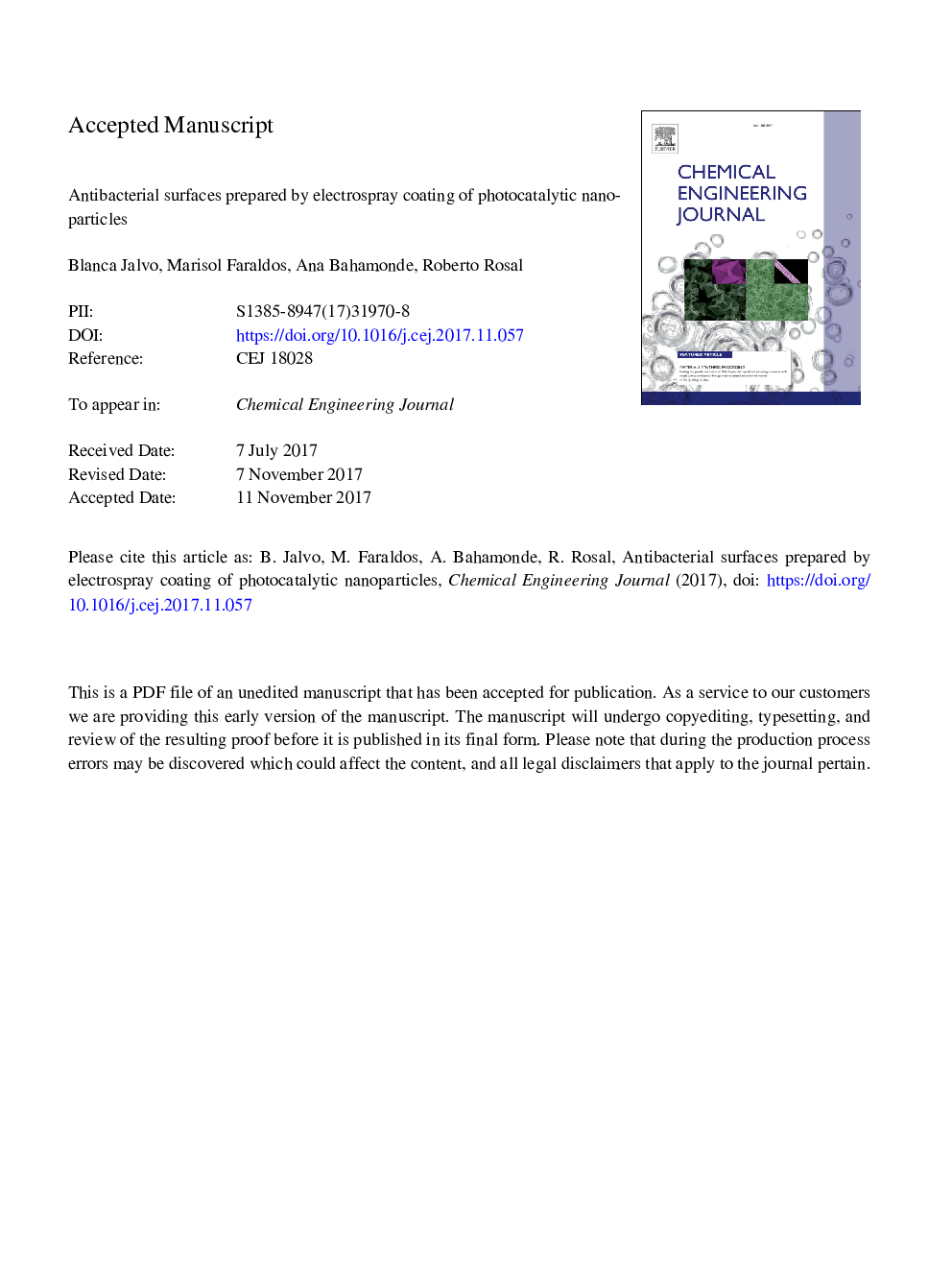| Article ID | Journal | Published Year | Pages | File Type |
|---|---|---|---|---|
| 6581091 | Chemical Engineering Journal | 2018 | 37 Pages |
Abstract
The aim of this work was to use electrospray to create photocatalytic TiO2 coatings and to study their antibacterial and antibiofilm capacity. The electrospray used a sol of TiO2 anatase nanoparticles prepared by a sol-gel method, which formed stable suspensions of positively charged particles (ζ-potentialâ¯+â¯22.3â¯Â±â¯3.7â¯mV). The electrospray deposited TiO2 on non-porous glass surfaces at two loading densities originating homogeneous coatings (3.2-4.3â¯Âµm) of particles the top layer of which displayed aggregates ranging from the micron scale to a few hundreds of nanometers, with lower size as TiO2 loading increased. TiO2-functionalized surfaces were tested for the inactivation of the Gram-positive bacterium Staphylococcus aureus. The electrosprayed surface was moderately hydrophilic turning highly hydrophilic upon irradiation (water contact angle 9.6° after 15â¯h under Xe-arc lamp). photocatalytic surfaces were put in contact with exponentially growing bacterial cultures in a flow system in which solar simulated irradiation followed two different 24â¯h dark-light arrangements with 9 or 18â¯h dark exposure followed by 15 or 6â¯h irradiation. The electrosprayed surfaces experienced extensive colonization by viable bacteria and clear biofilm formation revealed by exopolysaccharide matrix visualization. Using both dark-light cycles all cells became non-viable with extensive membrane damage. Biofilm matrix measurements showed that the irradiated surfaces were essentially free of bacterial exopolysaccharide matrix for specimens with the higher TiO2 loading density. The biofilm removal reached 99% and no regrowth of viable cells was observed in any case. The results showed that TiO2-electrospray can avoid biofilm accumulation under stringent environmental conditions.
Keywords
Related Topics
Physical Sciences and Engineering
Chemical Engineering
Chemical Engineering (General)
Authors
Blanca Jalvo, Marisol Faraldos, Ana Bahamonde, Roberto Rosal,
